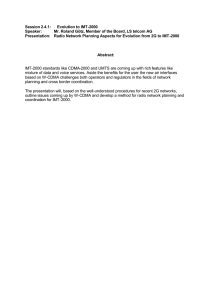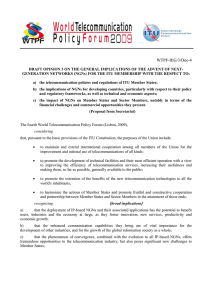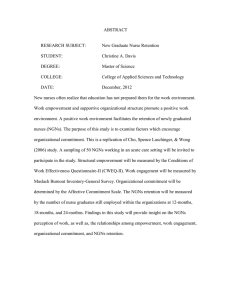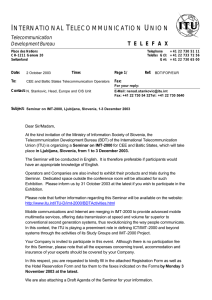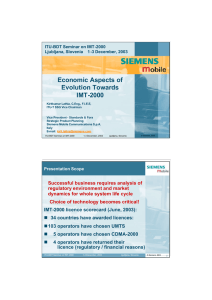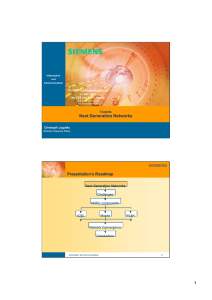DRAFT v.3 Abstract of presentation “Towards Next Generation Networks” ITU-BDT Sub-Regional Seminar
advertisement
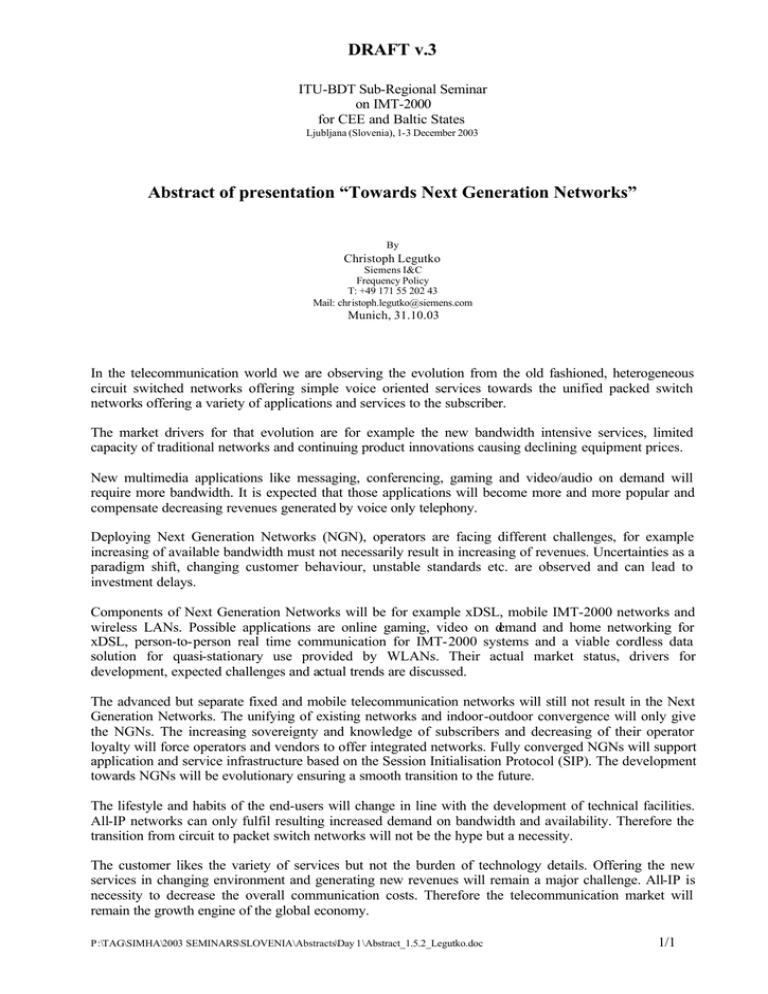
DRAFT v.3 ITU-BDT Sub-Regional Seminar on IMT-2000 for CEE and Baltic States Ljubljana (Slovenia), 1-3 December 2003 Abstract of presentation “Towards Next Generation Networks” By Christoph Legutko Siemens I&C Frequency Policy T: +49 171 55 202 43 Mail: christoph.legutko@siemens.com Munich, 31.10.03 In the telecommunication world we are observing the evolution from the old fashioned, heterogeneous circuit switched networks offering simple voice oriented services towards the unified packed switch networks offering a variety of applications and services to the subscriber. The market drivers for that evolution are for example the new bandwidth intensive services, limited capacity of traditional networks and continuing product innovations causing declining equipment prices. New multimedia applications like messaging, conferencing, gaming and video/audio on demand will require more bandwidth. It is expected that those applications will become more and more popular and compensate decreasing revenues generated by voice only telephony. Deploying Next Generation Networks (NGN), operators are facing different challenges, for example increasing of available bandwidth must not necessarily result in increasing of revenues. Uncertainties as a paradigm shift, changing customer behaviour, unstable standards etc. are observed and can lead to investment delays. Components of Next Generation Networks will be for example xDSL, mobile IMT-2000 networks and wireless LANs. Possible applications are online gaming, video on demand and home networking for xDSL, person-to-person real time communication for IMT-2000 systems and a viable cordless data solution for quasi-stationary use provided by WLANs. Their actual market status, drivers for development, expected challenges and actual trends are discussed. The advanced but separate fixed and mobile telecommunication networks will still not result in the Next Generation Networks. The unifying of existing networks and indoor-outdoor convergence will only give the NGNs. The increasing sovereignty and knowledge of subscribers and decreasing of their operator loyalty will force operators and vendors to offer integrated networks. Fully converged NGNs will support application and service infrastructure based on the Session Initialisation Protocol (SIP). The development towards NGNs will be evolutionary ensuring a smooth transition to the future. The lifestyle and habits of the end-users will change in line with the development of technical facilities. All-IP networks can only fulfil resulting increased demand on bandwidth and availability. Therefore the transition from circuit to packet switch networks will not be the hype but a necessity. The customer likes the variety of services but not the burden of technology details. Offering the new services in changing environment and generating new revenues will remain a major challenge. All-IP is necessity to decrease the overall communication costs. Therefore the telecommunication market will remain the growth engine of the global economy. P:\TAG\SIMHA\2003 SEMINARS\SLOVENIA\Abstracts\Day 1\Abstract_1.5.2_Legutko.doc 1/1
